How To Grow Forsythia As A Reliable, Low-Care Ornamental Shrub

SHRUBS > FORSYTHIA
Reviewed By COLIN SKELLY

Colin is a Horticulturist and Horticultural Consultant with experience in a range of practical and managerial roles across heritage, commercial and public horticulture. He holds the Royal Horticultural Society’s Master of Horticulture award and has a particular interest in horticultural ecology and naturalistic planting for habitat and climate resilience.
IN THIS GUIDE
FORSYTHIA GUIDES
Forsythia bushes are very popular as they fulfil a dual role.
These low-care shrubs are ideal for privacy screens and separation walls from one to three metres tall.
They are also high-quality ornamentals, especially through spring when they put on a stunning show with leafless branches bedecked with brilliant yellow bell-like blooms, and to some extent also in autumn with rich fall colours.
Overview
| Botanical Name | Forsythia |
| Plant Type | Shrub |
| Native Area | Mostly East Asia |
| Hardiness Rating | H4-H7 |
| Foliage | Deciduous |
| Flowers | Tubular bright yellow flowers |
| When To Sow | March, April, September, October |
| Flowering Months | March, April, May |
Sunlight
Preferred
Full Sun or Partial Shade
Exposure
Exposed or Sheltered
Size
Height
1 – 1.5M
Spread
1 – 1.5M
Bloom Time
March – May
Soil
Preferred
Most Soil Types
Moisture
Moist but well drained
pH
Any
Forsythia is a genus of what are technically deciduous shrubs but informally are flowering bushes.
Considered an ornamental plant, it is a member of the Oleaceae family which includes Olive trees, Jasmine, and Lilac.1Oleaceae. (n.d.). Plant Facts. Retrieved March 16, 2023, from https://plantfacts.osu.edu/resources/hcs300/olea.htm
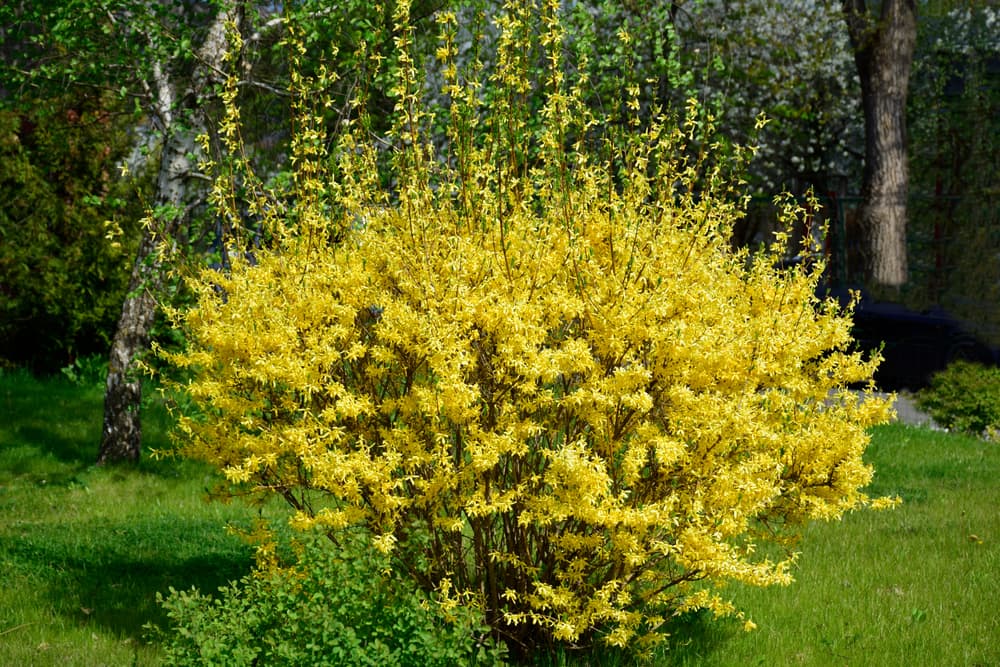
Most species grow from one to three metres tall.
While two metres is just about right for privacy screens, taller varieties of Forsythia make very good backdrops for a flower bed or at the far end of your garden, and the smallest varieties are equally good for borders.
The principal attraction of this bush is the profusion of yellow blooms it starts to wear from early spring, well before it sprouts leaves.
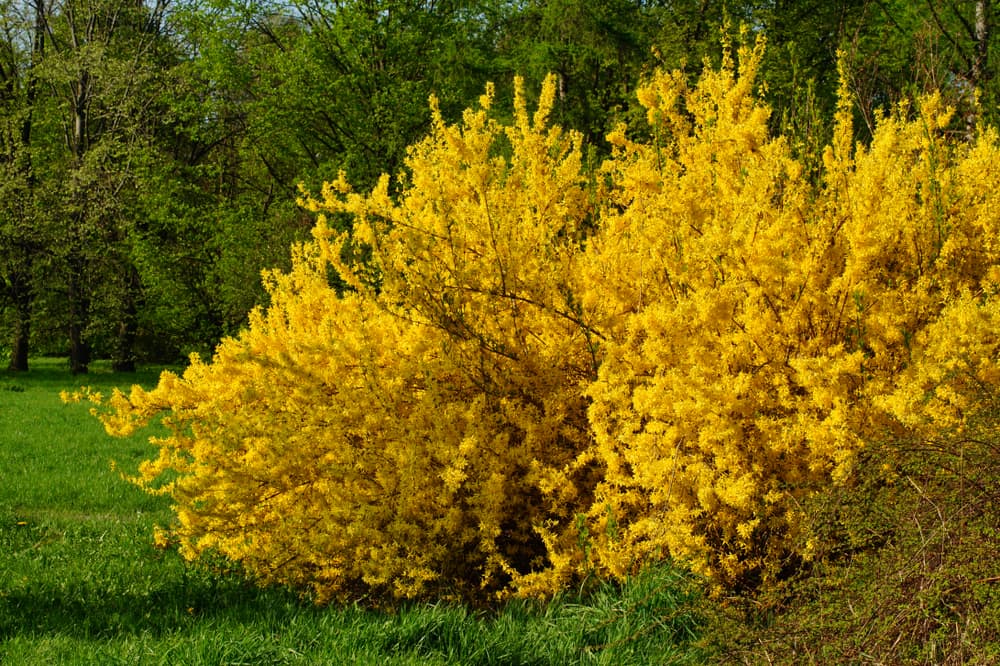
As a result, one sees a lattice of spreading, rangy, slim, leafless branches covered with an abundance of yellow flowers, which in turn, are often covered with bees and butterflies!
Forsythias retain their foliage all autumn long, if the climate is cooperative, and are one of the last shrubs to shed their leaves.
These no-nonsense bushes are strong and tough, and with next to no care or maintenance you can count on them as a ‘living wall’ to act as a border, backdrop, boundary marker, or privacy screen.
“Forsythia in the right position (full sun) and pruned regularly will produce an abundance of flowers year after year,” shares Horticulturist and Consultant Colin Shelly.
“I tend to use it as a dense screen or at the back of a border where its early flowers are a highlight and its later foliage form a foliar backdrop to later flowerers.”
Habitat & Growing Conditions
In general, Forsythias are hardy to RHS Zones H4-H7 (USDA Zones 5 to 9) depending on the particular variety.
As most European Forsythia cultivars descend from species that grew and grow wild along streams and waterways in Southern and Eastern China, Japan, and the Koreas, the best growing conditions should mimic their native habitats.

So the most suitable climate for Forsythia varies from temperate-warm to cold, the soil needs to be moist but well-drained, and while the aspect may be to any direction the exposure should be full sun or mostly sunny.
They prefer a little moistness in the soil and some moisture in the air; very dry weather conditions affect flowering.
They are perfectly content in soil varying from slightly acidic to slightly alkaline; pH 6.0 to 8.0.
Planting Forsythia
Almost all Forsythia are very easy to grow in late summer and early autumn from semi-hardwood (or semi-ripe) cuttings.
In late spring they can be grown from greenwood cuttings.
Forsythia may be planted wherever the soil and weather conditions, as outlined above, are suitable.
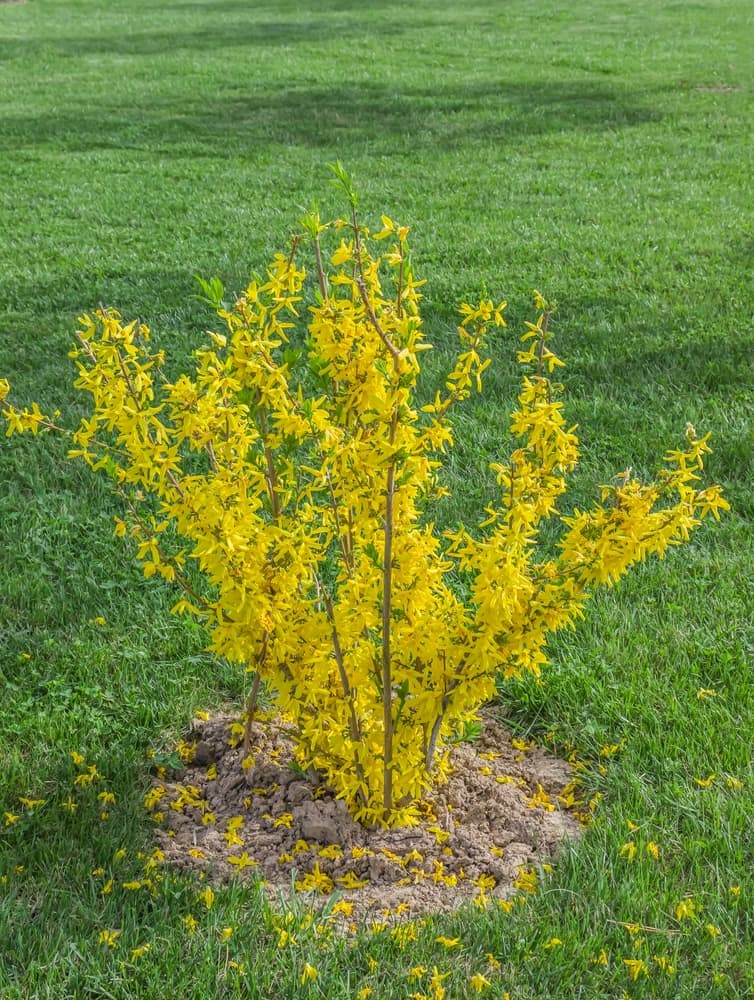
The taller varieties can be planted at the rear of the garden as a backdrop or used as separation walls and privacy hedges.
The shorter varieties are ideal for borders and edges, but also as companion plants in a bed if they are kept pruned.
The medium-sized varieties can be used as elements of a formal garden (as they are in Japanese Gardens).
A variety of weeping Forsythia is perfect for growing on a trellis or for planting right beside a pergola.
Plant Care
Forsythia is a no-fuss plant that demands virtually no feeding or care.
Mature Forsythia bushes have a strong root system and make do with moisture in the soil and water from rainfall.
They will also tolerate a period of drought but if you get a prolonged dry spell, it is much better to water them than to rely on their drought tolerance.
Fresh cuttings, layerings, and immature plants should regularly be watered.

What Forsythia can’t do without is ample sun.
Though they fare very well in partial shade, this does have a negative impact on flowering.
Therefore, full sun is best for this plant, particularly in the United Kingdom.
These bushes will also benefit from an application of a general-purpose fertiliser once at the onset of spring and once more at the beginning of summer.
Common Problems
Forsythia flowers are, fortunately, a hit with butterflies and bees; the buds are, very unfortunately, also a hit with birds, so you may have to watch out for finches, sparrows, and other such naughty birds.
Otherwise, all you need to be concerned about with these pest-resistant plants is Forsythia Gall and Crown Gall.
These are bacterial diseases that cause abnormal, tumour-like growths.
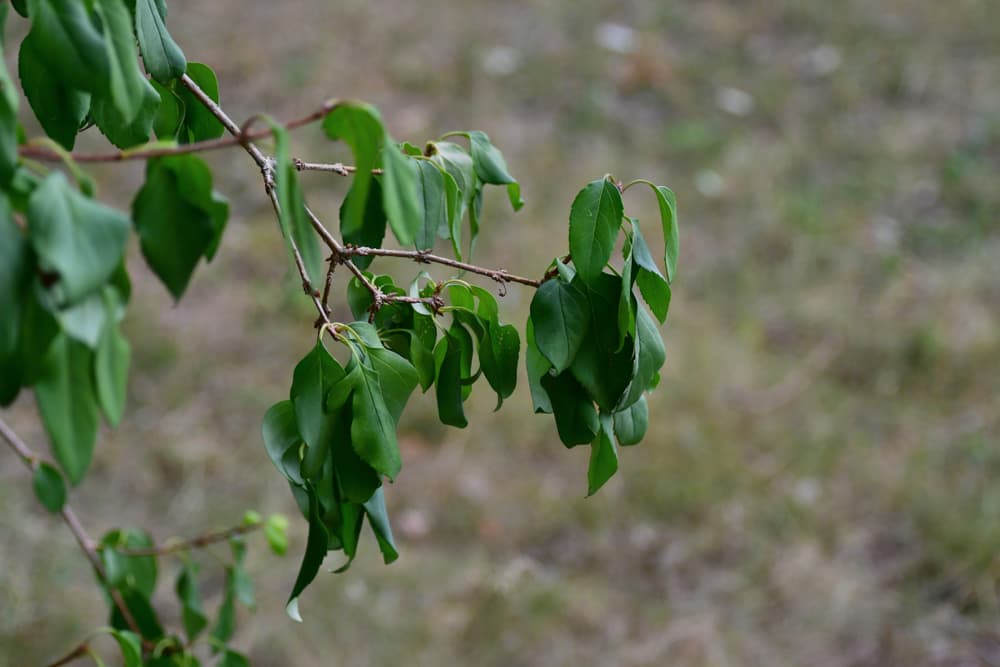
These diseases can affect any part of the plant and often escape detection and are difficult to diagnose.
Very unfortunately, they are contagious and spread via soil; treating them is best left to a professional horticulturist or arborist.
Sourcing Forsythia
Quite a selection of Forsythia varieties are sold as bare roots or as potted plants by numerous nurseries in the UK.
They can be bought on-site or ordered for home delivery.
However, you don’t have to buy Forsythia if a friend or a neighbour has a variety you want, or vice versa.
You can start off a new Forsythia plant any time from late spring to early autumn by rooting an appropriately-taken cutting in a rich planting soil that includes peat moss.
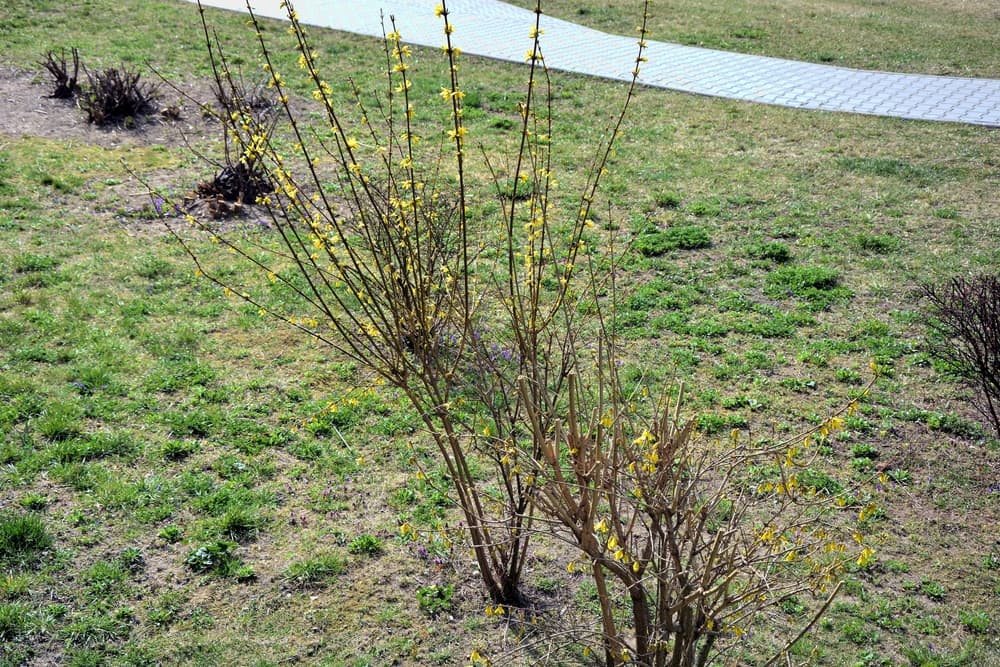
You will – of course – have to take proper care of the cutting until it is established.
You could also watch for a branch that has touched the ground and put down roots.
Once it has developed into a plant in its own right by putting out shoots and branches, it can be removed and transplanted.
Take good care not to damage the tap root.
Finally, if you know the technique of layering, you can get new Forsythia via this fourth option as well.
References
- 1Oleaceae. (n.d.). Plant Facts. Retrieved March 16, 2023, from https://plantfacts.osu.edu/resources/hcs300/olea.htm

